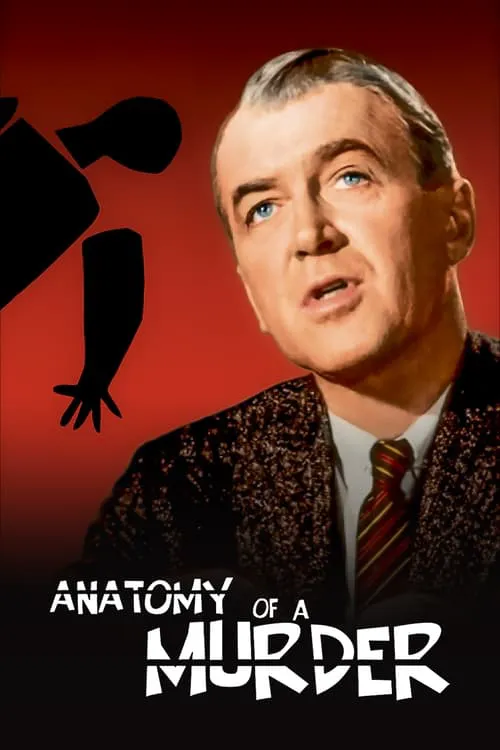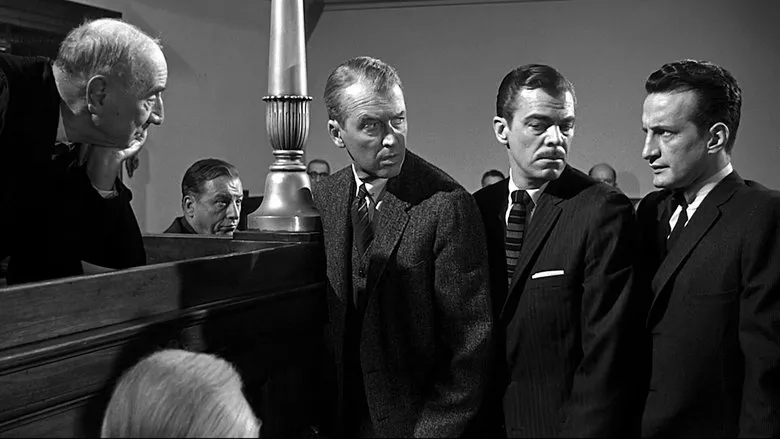Anatomy of a Murder

Plot
The courtroom is abuzz with whispers and speculative glances as a highly publicized murder trial unfolds in Pines County, Michigan. At the center of the controversy lies Army Lieutenant Frederick Manion, a well-respected and charismatic officer, who has been accused of taking the life of Ralph "Stumpy" Sommers, the local and rather unsavory innkeeper. What sets this case apart from other murder trials is the circumstances surrounding the alleged murder. Manion's wife, Lynette, a fragile and emotionally charged woman, testifies that she was brutally raped by Sommers on the night before the murder, leaving Manion feeling betrayed and outraged. The state takes the case to semi-retired lawyer Paul Biegler, who agrees to represent Manion in his hour of need. Biegler pairs with his trusty sidekick, court reporter Parnell Emmett McCarthy, to gather evidence and build a defense case against Manion's accusers. As the trial progresses, Biegler faces off against the cunning and seasoned District Attorney George Pringle and out-of-town prosecutor Claude Dancer, a seasoned attorney with an impeccable reputation. It soon becomes apparent to Biegler that this high-profile case will require all of his expertise and strategic thinking to secure a favorable outcome for his client. Throughout the trial, the atmosphere in the courtroom remains tense, with emotions running high. Manion's character is portrayed by Biegler as that of a man driven by honor and a desire to protect his wife, as opposed to one prone to reckless violence. However, there are moments of hesitation from Manion during Biegler's questioning that raise suspicion about his client's guilt. Manion's demeanor is often stoic and detached, causing Biegler to worry that his client may inadvertently implicate himself further. In an effort to prove Manion's sanity and provide a plausible motive for the murder, Biegler delves into the background of the deceased, Sommers, only to discover that the innkeeper was involved in some shady dealings and had a penchant for seducing young women. Biegler also learns that Sommers had a mysterious business partner, a wealthy and enigmatic figure named Arthur Bennett, whose presence in the trial seems suspiciously out of place. As the trial progresses, Biegler realizes that Lynette's testimony, while initially convincing, begins to unravel under cross-examination by Claude Dancer. The prosecutor raises questions about Lynette's credibility, pointing out inconsistencies in her story and suggesting that she may have fabricated the rape story to cover up her own infidelity. As the trial reaches its climax, Biegler must rely on his wits and expertise to turn the tables on the prosecution. He employs a brilliant, if somewhat unorthodox, defense tactic, focusing on the inconsistencies in Lynette's testimony and the suspicious circumstances surrounding Sommers' business dealings. Meanwhile, the enigmatic Arthur Bennett remains an enigma, shrouded in mystery, and it becomes clear that his involvement in Sommers' business ventures may be more profound than initially suspected. As the case unfolds, the lines between right and wrong become increasingly blurred. With the outcome of the trial hanging in the balance, Biegler must confront the complexities of justice and the imperfections of the human characters at the center of the trial. In the end, the courtroom becomes a battleground where reputations are ruined or vindicated, and the truth is revealed in a series of dramatic and emotionally charged twists. Biegler's defense, while unorthodox, ultimately proves to be the deciding factor in securing Manion's release. However, the real question lingers – did Manion act in self-defense, or was he guilty of murder all along?
Reviews
Recommendations





